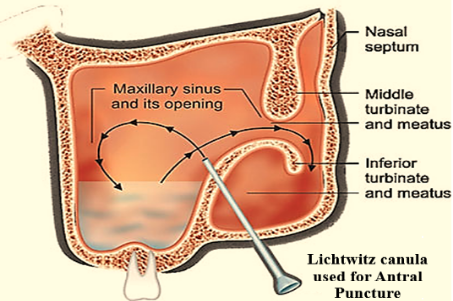

It is a procedure done both for diagnosis and treatment of sinusitis, where a canula is inserted into the maxillary sinus via an opening made in the inferior meatus. It was widely practiced before FESS surgery.
Antral Lavage:
The 3 main nerves blocked by local anesthesia are:
The Tilley- Lichtwitz trocar and cannula is passed under the attachment of the inferior turbinate up-to the genu pointing to the homolateral ear.
